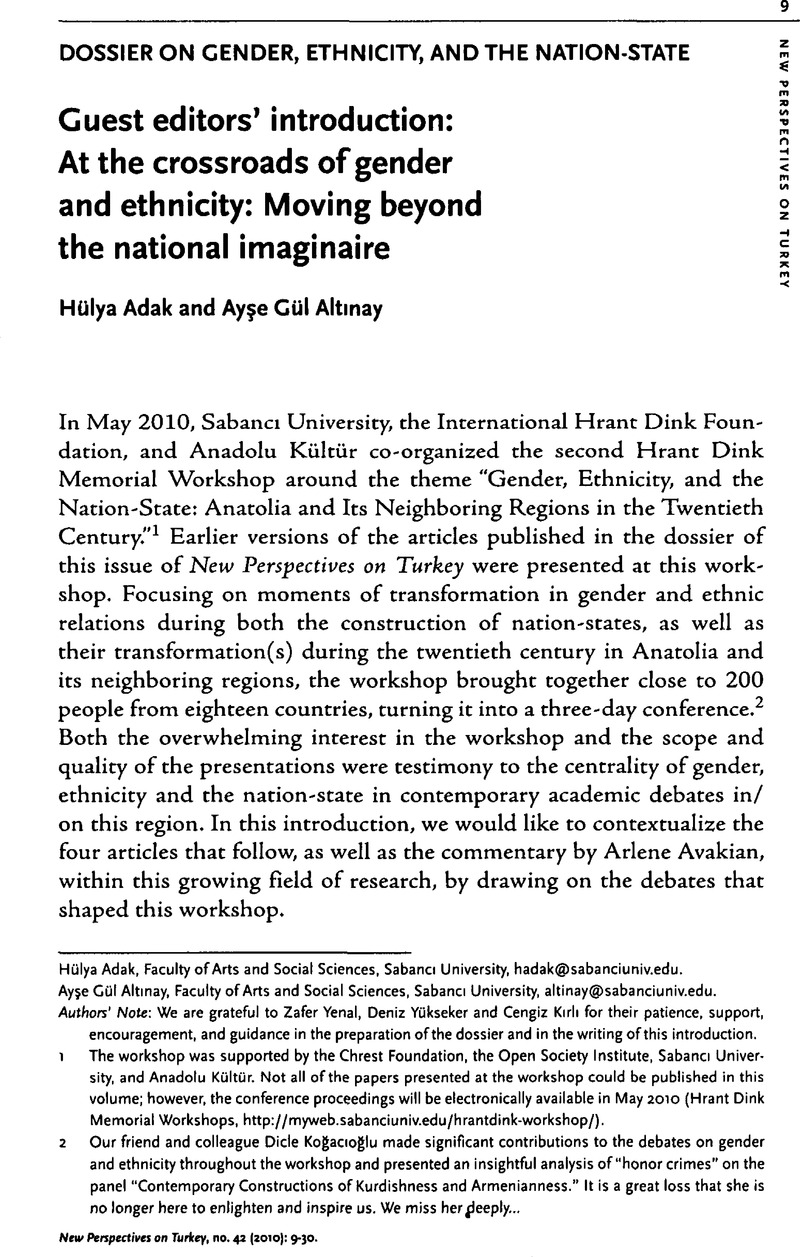Crossref Citations
This article has been cited by the following publications. This list is generated based on data provided by Crossref.
Adak, Hülya
2014.
A Journey into Women's Studies.
p.
266.
Altınay, Ayşe Gül
2014.
Centennial challenges: Denationalizing and gendering histories of war and genocide.
European Journal of Women's Studies,
Vol. 21,
Issue. 3,
p.
307.
Altınay, Ayşe Gül
2019.
Undoing Academic Cultures of Militarism.
Current Anthropology,
Vol. 60,
Issue. S19,
p.
S15.
Dell’Abate Çelebi, Barbara
2025.
Nezihe Muhiddin and the Struggle for Women’s Franchise. The Defeat of Feminism by Nationalism in Early Republican Turkey.
Nations and Nationalism,
Kara, Esen
2025.
Ecological imagination and women’s memory in the contemporary Turkish novel.
Interventions,
p.
1.


